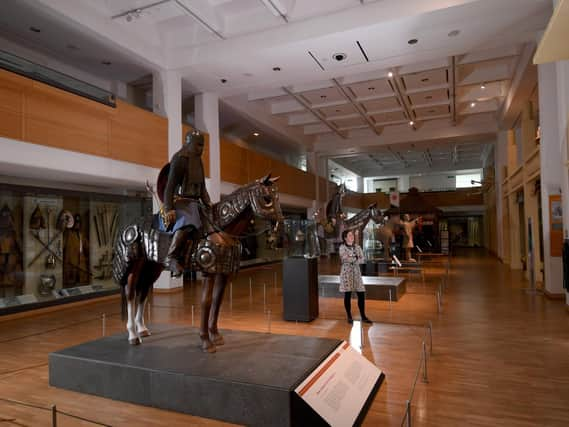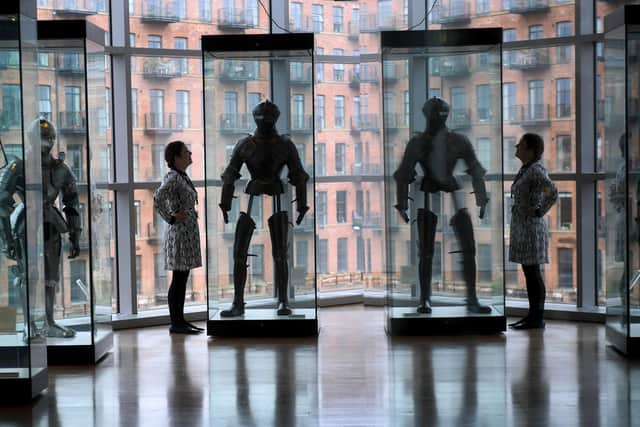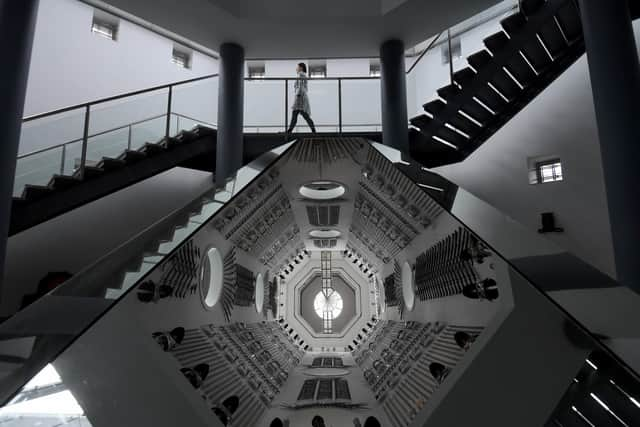Royal Armouries Museum Leeds: How learning from World War II can help us bounce back from the pandemic with a digital vision


When the director of collections at the Armouries started to read books about how museums in the past returned and bettered after war, the messages she came across rang true to the situation we face today.
Laura Bell said that the reiterated memorandum of not returning to what was, but instead learning from what has happened, is how she and the rest of the Royal Armouries team have adapted and will continue to recover from the effects of the pandemic.
Advertisement
Hide AdAdvertisement
Hide AdIn a nuanced world of digital importance, the museum is beginning its rebound with a new Digital Vision project, which is orientated around attracting and engaging with audiences by providing richer experiences online.


Mrs Bell said: “I’ve been spending some time reading about museums bouncing back after World War II and it was really interesting to find out how they managed after what, in some ways, has been quite a similar situation.
“I took away that it is essential that we do not go back to where we were, but instead we have to learn from what has happened.
“And, there really is so much that we can learn with so many opportunities and therefore some positives we can take from the past year that can help us to adapt, change and learn something new.
Advertisement
Hide AdAdvertisement
Hide Ad“I don’t think any of us should, or can, be quick to just retreat to what normal was before and museums should be the same.”


While closed, the Royal Armouries has been using its digital platforms to deliver lecture series’, online exhibitions, educational lessons and displaying its collections with all partnered information on its website.
Mrs Bell added that in doing so, the museum has broken a physical barrier that might have existed between collections and people who weren’t able to access the museum itself, before.
She said: “Our main role is about making a connection between our collections and the public - that’s what we’re all about.
Advertisement
Hide AdAdvertisement
Hide Ad“Where we haven’t been able to do that directly, it’s been about getting a balance struck between that and engaging online so that we can expand how we can get our collection to others.
“Actually, in some ways we’ve had more people in attendance because people around the world can join in and engage and there isn’t a physical barrier.
“Nothing can ever take away from being with the actual objects we have and being in a room with them and understanding and appreciating them in the same way, but if there was a physical barrier before, perhaps we’ve helped break that down a bit.”
Mrs Bell said that the conference series that the Armouries has been running virtually has received 10 times more attendees than it would have done normally, in person.
Advertisement
Hide AdAdvertisement
Hide AdShe added that this was a reason why the Digital Vision project, funded by an award from The National Lottery Heritage Fund, is ever-more important in a post-pandemic world.
Mrs Bell said: “We’re getting people all over the world engaging, joining in with conversations and talking about the research they’ve done on topics and it’s just fantastic.
“It has opened up our eyes and hopefully theirs, and it’s helped us to take this bad situation, learn from it, and make things better.
“Museums are often considered to be quite traditional establishments, and because of that, curators are one of the most trusted professions out there.
Advertisement
Hide AdAdvertisement
Hide Ad“We now need to learn from that and move more quickly in sharing information, without being afraid to have the conversations such as what we have had with people from a more wider audience as a result of having to move online during lockdown.
“It’s time to start sharing experiences to better ourselves and that’s what I’ve always thought museums are about - a shared past and a sense of being and place.
“We will learn as we become more agile in a new world.”
The Royal Armouries Museum is set to mark its 25th anniversary later this year - and will celebrate by talking to people about their experiences 25 years ago when the armour collection made its move to Leeds
Mrs Bell added: “We’re learning, and developing, and as a result our 25th anniversary will focus on widening our audience by capturing the people and their experiences that gave the Armouries its regional Leeds base.”
Comment Guidelines
National World encourages reader discussion on our stories. User feedback, insights and back-and-forth exchanges add a rich layer of context to reporting. Please review our Community Guidelines before commenting.